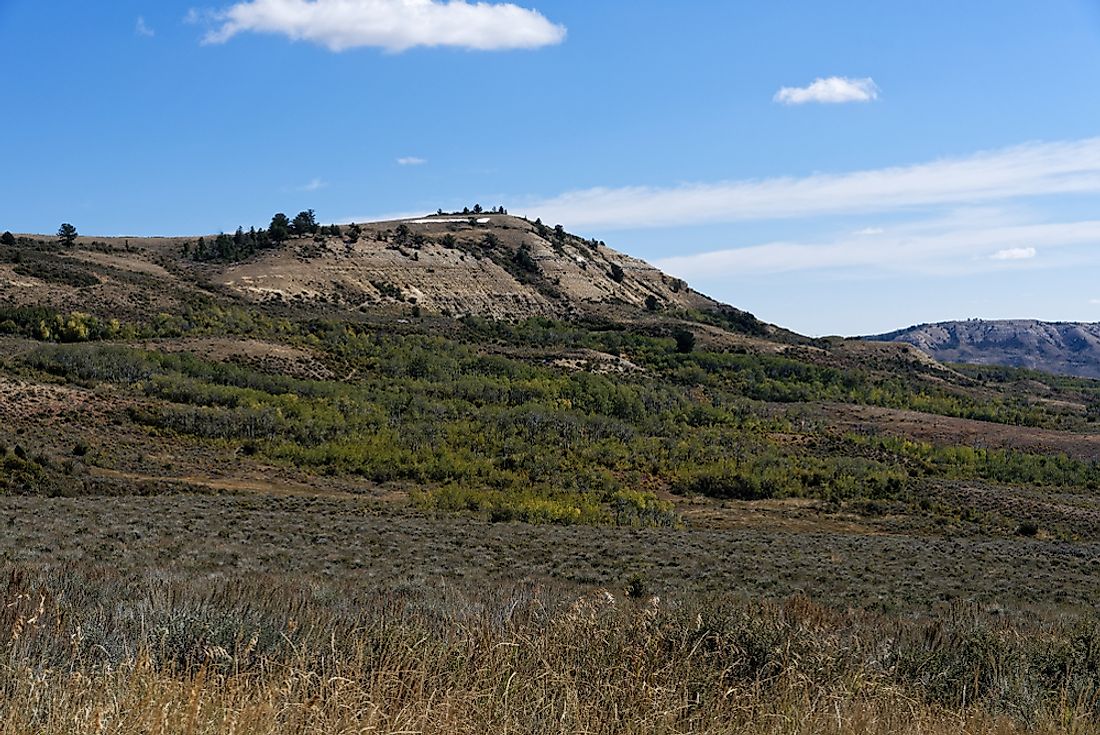Fossil Butte National Monument - Unique Places in North America

Fossil Butte National Monument was created in 1972 through a Congressional act to preserve the best paleontological sites and other related geological phenomena. The Act protects the 50 million-year-old lake bed known as the Fossil Lake covering an area of 8,200 acres. During the Eocene era, the Lake was formed and the sedimentary of the Green River formation was deposited and therefore preserving some of the best-known fossils intact. The fossils that have been preserved include bats, alligators, turtles, insects, fish, and dog-sized horses among other animals and plants. It is believed that the region’s basin was lowland and subtropical and had freshwater when the sediments accumulated for a period of 2 million years.
Description
Fossil Butte National Monument is found 15 miles west of Kemmerer in the US state of Wyoming and it is a national monument managed by the National Park Service. The monument consists of plant and animal fossils which are associated with Fossil Lake which dates back 56 to 34 million years ago. Of the three great lakes that existed millions of years ago in what is present-day Colorado, Wyoming, and Utah, Fossil Lake was among the smallest. Lake Uinta and Lake Gosiute were the other two lakes. On October 23rd, 1972, the Fossil Butte National Monument was established as a national monument through an act of Congress.
Threats
According to research, the ancient lake’s center is located about two miles outside the boundary of the monument which means Fossil Lake’s most critical paleontological resources is not inside the protected area. Additionally, there is an even more existential threat to Fossil Butte National Monument in the form of a private industry which has proposed to build over a hundred wind turbines on Fossil Ridge. By doing so, the concrete pads that are 26-foot in diameter being used to penetrate about 30 feet underground will threaten the best fossil resources found in the area. Similarly, the 300-foot high wind turbines will obstruct the monument from view.
Habitat
Fossil Butte National museum has more than 100 species of snakes, mammals, amphibians, and birds. There are no larger ungulate and carnivorous animals, although more species are expected to be discovered in future. From north to south, the lake is believed to have been about 40 to 50 miles in length and 20 miles in width. However, over the 2 million years that Lake Fossil existed it varied in both length and width. The monument features only 13 square miles of the original 900 square miles ancient lake. Aside from the fossil-bearing strata, a considerable portion of the stream, river, and Wasatch Formation represent the ecosystem of the shoreline found around the lake; it contains the bone fragments and fossil teeth of Eocene mammals. Early horses and primates are among the fossil found the shoreline’s ecosystem.
Uniqueness
The national monument preserves North America’s and possibly the world’s best paleontological record of Cainozoic aquatic communities of 50 million-year-old ancient lake bed. Some of the fossils include insects, alligators, horses the size of dogs, turtles, and bats among many other plant and animal species. The fossils suggest that area must have been a low subtropical freshwater basin during the time of the sediments’ accumulation, over a period of 2 million years.
Tourism
Fossil Butte attracts many visitors both local and international. Activities that are available within the region during the summer include participation in collecting fossil quarry for the park, hikes, ranger programs, and geology and paleontology talks. There are also junior ranger programs for children aged between 5 and 12 years which can be completed in about 3 to 4 hours. The highlight of visiting the monument is the three quarter mile hike, up the butte to the dig; it is here that the interns from the Geological Department of America discuss excavation. The interns even allow the kids to assist them in flaking apart sedimentary deposits to discover coprolites and fish fossils.











